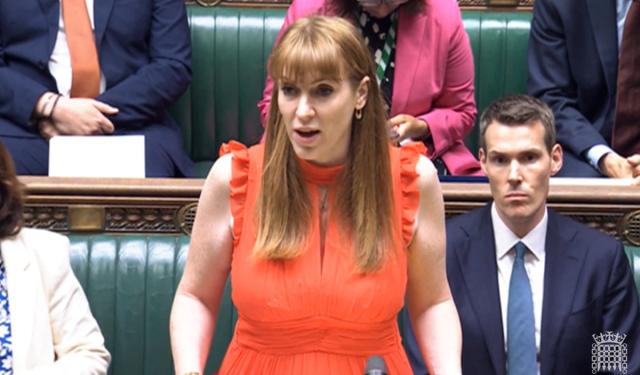
Angela Rayner has received a cautionary message about the government’s housing targets, suggesting that focussing excessively on building new towns across England may lead to potential risks.
Last month, the deputy prime minister unveiled plans for a significant housebuilding programme, which is said to be the largest since the postwar era. The creation of a new generation of towns will kick off this ambitious initiative.
This strategy aims to help the government realize its goal of building 1.5 million homes over the following five years. It draws inspiration from the development of numerous communities in England after the Second World War, such as Stevenage, Warrington, and Milton Keynes.
According to analysis from the urban policy thinktank Centre for Cities, the programme only contributed to 3.3% of all new housebuilding in the 40 years following the postwar 1946 New Towns Act.
According to the study, from 1947 to 1991, new town development corporations in England successfully managed the construction of 307,000 houses. Interestingly, this is the exact number of houses that the government will need to build on average every year until 2029.
Sir Michael Lyons and Dame Kate Barker, both experts in their fields, recently established a new town taskforce under Rayner’s direction. The panel will carefully assess suitable locations for new towns and provide recommendations within a year.
According to the proposals, the government aims to establish sizable communities consisting of a minimum of 10,000 new homes each, although some may be even larger. The government has set a target for approximately 40% of these homes to be classified as affordable housing, which would include social-rented properties. Ministers are optimistic that the rebooted New Towns programme has the potential to construct a significant number of homes in the future.
According to the Centre for Cities, the government would need to construct a much larger number of new towns and urban extensions than England has ever accomplished in order to make any meaningful progress towards its 1.5 million target.
According to its analysis, a significant majority of homes in new towns were constructed by public authorities. In contrast, only a small number, approximately 76,000, were built by private housebuilders on land specifically designated for new towns in the four decades following 1946. During the same period, 880,000 homes were built in Greater London.
Last year, approximately 189,260 homes were constructed in the UK, with the private sector accounting for about three-quarters of them. In 1977, there was a significant increase in the number of houses built, with over 300,000 being constructed in a single year. During that time, a considerable portion of these houses were built by councils.
According to David Rudlin, a prominent urbanist and expert on new towns, discussions with the government have revealed that an area of greenfields twice the size of Milton Keynes would be necessary to fulfil the housebuilding commitment.
The Centre for Cities’ analysis found that new towns have a reputation for building homes more quickly than the rest of the nation. However, it is worth noting that the number of homes they contribute to overall housebuilding is relatively low.
In terms of size and impact, Milton Keynes stands out among new town developments. Constructed in the 1970s, it has made a significant contribution, surpassing the average new town development corporation by more than double.
The thinktank suggested that the government should prioritise its new town-building programme in areas with the greatest need, particularly in London and the south-east. Considering expansions to current urban areas could also be beneficial.
According to the Centre for Cities, new towns should be considered just one of the tools the government can use to reach its targets. They also highlighted the importance of imposing housing targets on local councils as a significant step in the right direction. The thinktank suggested that the central government may need to take a more authoritative approach in order to implement housing developments in certain areas.
Maurice Lange, an analyst at the Centre for Cities, stated that the government has not provided a specific timeline for the delivery of a certain number of houses through new towns. However, it is implied that these projects are considered crucial to fulfilling the government’s promise of 1.5 million homes as outlined in its manifesto.
Based on previous experience, it seems that the policy can have a positive impact on development in specific areas, although its overall contribution to increasing total housebuilding is expected to be limited. This emphasises the importance of implementing broader reforms to ensure that the planning system becomes more purposeful and predictable throughout the UK.
The government spokesperson emphasised that new towns are an integral part of their strategy to stimulate construction in Britain and address the housing needs of the country. They are responsible for delivering a significant number of affordable homes in the coming decades.
“From the beginning, it has been emphasised that this is a project with long-term goals. However, we are proud to announce that our efforts to revamp the planning system will result in the delivery of 1.5 million homes during this parliamentary term.”